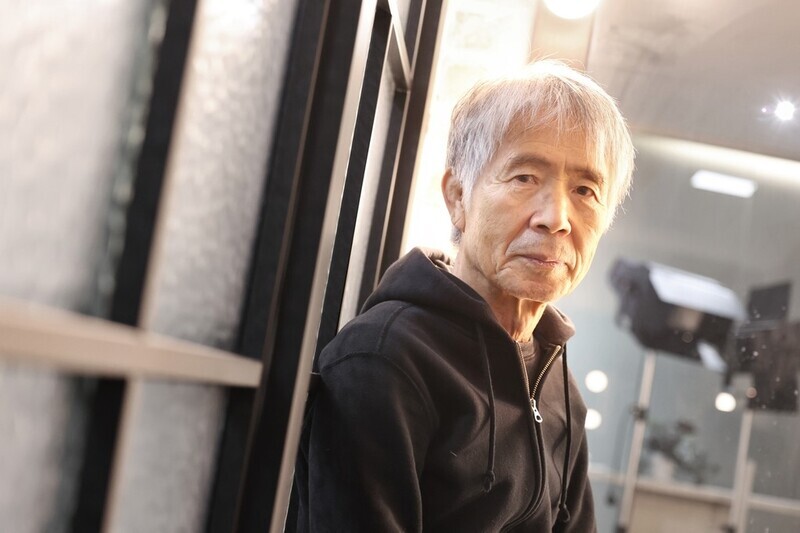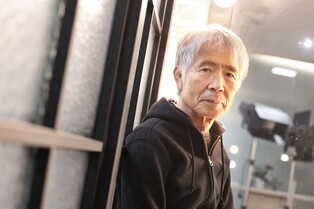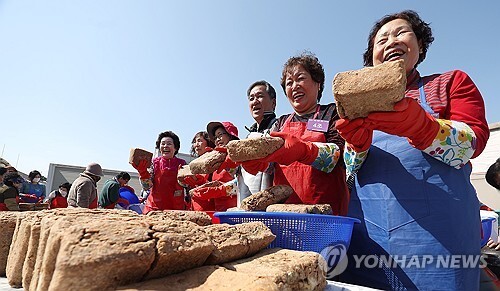 |
| ▲ Participants hold blocks of meju, or Korean traditional fermented soybean bricks, at the "Traditional Soy Sauce and Paste Making Day" event held at the Dalseo-gu Senior Welfare Center in Daegu on March 18, 2024. (Yonhap) |
SEOUL, Nov. 5 (Yonhap) -- “Jang (fermented soy sauces and pastes) is the essence of all flavors; without its depth, even the freshest vegetables or finest meats fall short,” reads an old Korean agricultural text, "Expanded Forest Economy."
Integral to Korean cuisine, traditional jang varieties, such as "doenjang (soybean paste) and "ganjang (soy sauce)," have been central to Korean palates for centuries.
Historically, families would craft meju—the soy bricks used to make jang—around early winter. This process symbolized family traditions, with each household’s jang embodying its unique flavor and serving as a signature seasoning. From the careful preparation of ingredients to the patient fermentation process, the making of jang was held in high regard. Rituals like tying protective ropes around jang crocks reflected a belief in guarding the process.
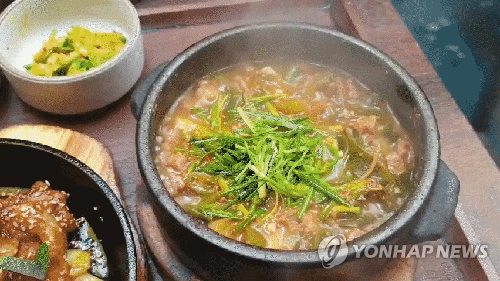 |
| ▲ South Korean traditional "doenjang jjigae," or bean paste stew, is served with other local dishes. (Yonhap) |
Korea’s jang culture, known for its distinctiveness, first appeared in historical texts as early as 1145, in the Samguk Sagi, where it was noted among offerings to the queen, revealing its esteemed role.
In the Goryeo Dynasty, records show that King Hyeonjong provided jang to starving citizens, while the royal kitchens of the Joseon Dynasty appointed specialized artisans to oversee its production and preservation.
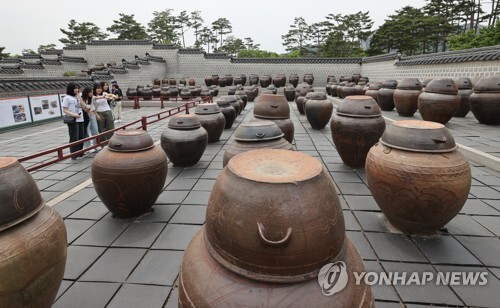 |
| ▲ Rows of earthenware pots are lined up at the jangdokdae in the Janggo storage area of Gyeongbokgung Palace, in this undated Yonhap file photo. (Yonhap) |
Making jang is a months-long process: soybeans are boiled, mashed, and shaped into meju blocks. These blocks ferment for three months before soaking in saltwater to create soy sauce, while the remaining solids are aged into doenjang.
This artful, time-honored process, described by Hoseo University’s Professor Jeong Hye-kyung as a “delicate patience,” yields uniquely Korean flavors shaped by the land and climate.
Professor Jeong also highlights jang’s cultural significance as a “core of Korean cultural identity” that preserves creativity and heritage.
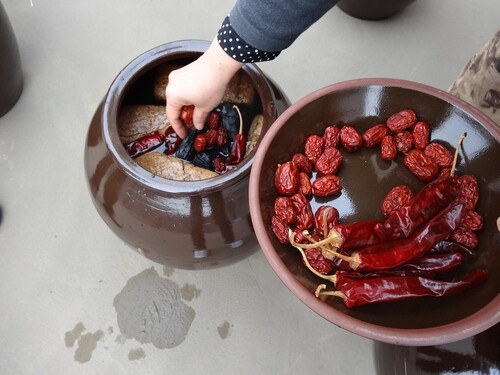 |
| ▲ This image, provided by the National Heritage Administration, shows South Korea's traditional process of adding jujubes, chili peppers, and other ingredients to jars of fermented paste. (PHOTO NOT FOR SALE) (Yonhap) |
Next month, Korea’s jang culture is expected to be recognized as a UNESCO Intangible Cultural Heritage, a distinction that underlines its legacy.
Master artisan Ki Soon-do, from a family that has preserved its recipe for 370 years, underscores the responsibility to preserve Korea’s jang, which is now appreciated globally by chefs from around the world.
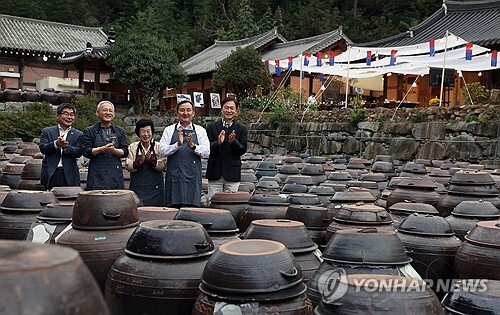 |
| ▲ Minister of Culture, Sports and Tourism Yoo In-chon visits master artisan Ki Soon-do’s residence, recognized for traditional Korean soy sauce and paste, during the "Let’s Go Local to See Local 100" campaign in Damyang County, South Jeolla Province on October 17, 2024, and poses for a commemorative photo. (PHOTO NOT FOR SALE) (Yonhap) |
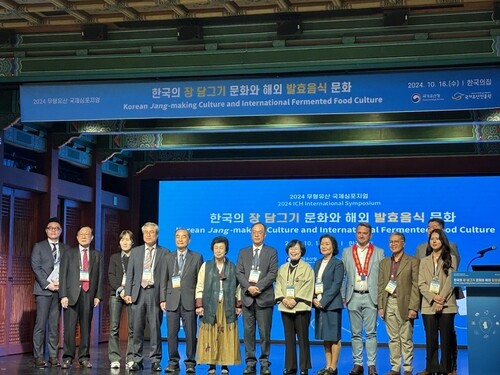 |
| ▲ Attendees take a commemorative photo at the "2024 International Symposium on Intangible Heritage" held at Korea House in Jung-gu, Seoul,on October 16, 2024. Hosted by the National Heritage Promotion Agency, the symposium discussed Korea’s traditional jang culture and international fermented food practices. (Yonhap) |
(C) Yonhap News Agency. All Rights Reserved


















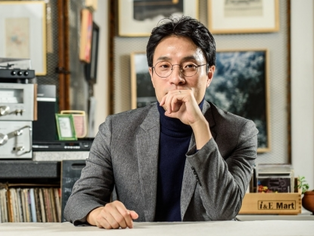
![[2026 Outlook] BTS, BLACKPINK comebacks; UNESCO World Heritage session in Busan fuel K-culture momentum](/news/data/20251226/p1065576816972067_337_h.jpg)





